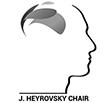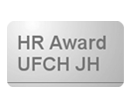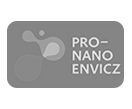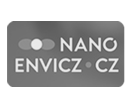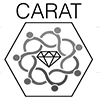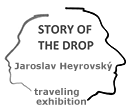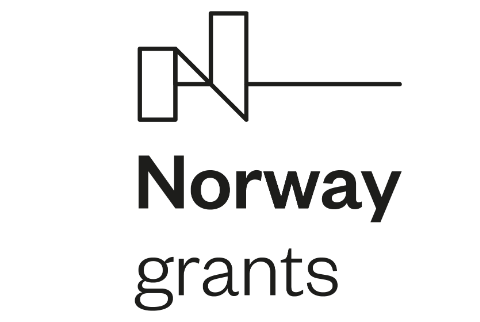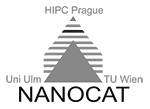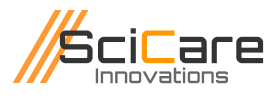Přístrojové vybavení Oddělení dynamiky molekul a klastrů
A: Major Equipment – Dynamics of Molecules and Clusters
1) CLUB: CLUster Beam Apparatus - home-built, unique and versatile apparatus for different experiments with clusters
EXPERIMENTS:
- VMI -velocity map imaging: photodissociation of molecules in clusters with different UV lasers
- RTOF (S. Kaesdorf, Munich) -reflectron time-of-flight mass spectrometer: cluster mass spectrometry in different modes
- electron ionization (tunable electron energy 5-90 eV)
- photoionization (multiphoton processes, various UV lasers)
- sodium doping and electron photodetachment
- negative mode, electron attachment (electron energy 0-20 eV)
- various combinations of the above methods
- QMS -quadrupole mass spectrometer with electron ionizer
- pickup experiments, velocity measurements, clusters cross section measurements
APPARATUS:
- 7 vacuum chambers (HV&UHV); 9 vorvacuum pumps, 2 Roots-blowers, 4 diffusion pumps, 4 turbomolecular pumps; VMI system; RTOF and QMS mass spectrometers; auxiliary laser systems (see below)
2) AIM: Apparatus for Imaging – home-built apparatus for velocity map imaging (VMI) experiments with molecules and small clusters
- 2 vacuum chambers; 3 vorvacuum pumps, 2 turbomolecular pumps; auxiliary laser systems UV & IR (see below)
3) Quantitative dissociative electron attachment (DEA) spectrometer
- measurement of absolute DEA cross sections
- measurement of absolute total positive ionization cross sections
- trochoidal electron monochromator coupled with quantitative ion time-of-flight analyzer
- total ion collecion mode
- current electron energy range 0-60 eV (extension planned in a near future), electron energy resolution 250 meV
4) DEA spectrometer with quadrupole mass filter
- measurement of high-resolution DEA ion yields, analysis of negative-ion fragmentation patterns for gas, liquid and solids samples
- quadrupole mass range 0 – 2000 amu
- electron energy resolution approx. 50 meV
- direct insertion probe, heatable up to 400 degrees, for samples with low volatility
5) Electron energy loss spectormeter
- electrostatic setup with hemispherical monochromator and analyzer, gas-phase samples
- measurement of absolute differential electron scattering cross sections, both elastic and inelastic (vibrational and electronic excitation)
- angular range 0-180 degrees, enabled by magnetic angle changer
- electron energy resolution down to 15 meV
- sensitivity range approximately five orders of magnitude
6) Tunable diode laser direct-absorption spectrometer coupled with pulsed slit-jet supersonic nozzle source – home-built apparatus for high resolution spectroscopy
- External Cavity Diode Laser, CH, NH, OH first overtone
- Michelson wavemeter
- temperature stabilized Fabry–Pérot interferometer
- pulsed slit nozzle, 0.1 x 40 mm, 3 Hz
- gas inlet system
7) Tunable diode laser Cavity Ring-Down Spectrometer (CRDS) coupled with pulsed slit-jet supersonic nozzle source – home-built apparatus
- External Cavity Diode Laser, CH, NH, OH first overtone
- pulsed slit nozzle, 0.1 x 40 mm, 3 Hz
8) Photoacoustic spectrometer
- Tunable IR OPO/OPA Laser System ( LaserVision)
- home built crossed Turne-Czerny spectormeter (700 - 900 mn) for OPO wavelength measurement
- home built cantilever detector
B: Available Methods
1) Molecular beams:
- homogeneous and heterogeneous clusters and nanoparticles prepared by expansion into vacuum, molecules deposited on clusters and nanoparticles by pickup techniques, size selected clusters via He scattering
2) Velocity Map Imaging (VMI)
- photodissociation of moleculer and clusters (UV; IR-UV pump-probe)
3) Dissociative Electron Attachment (DEA),
- absolute cross sections for gas-phase molecules, ion-yields and fragmentation patters for clusters
4) Electron Ionization for mass spectrometry, threshold measurements
5) Multiphoton ionization for mass spectrometry
6) Sodium doping and electron photodetachment for cluster mass spectrometry
7) Electron energy loss spectroscopy
8) IR absorption spectroscopy
C: Auxiliary equipment
1) ArF laser
- LAMBDA ( Excimer Lambda: Compex~102)
- 193 nm, 10 Hz, 30 kV, 200mJ
2) Tunable UV Laser System
- Pulsed ND:YAG (Quanta Ray GCR-5), 10 Hz, 1064 nm, pulse energy ≈ 1 500 mJ, pulse width 7-9 ns, 532 nm, pulse energy ≈ 700 mJ/p, pulse width 5-7 ns
- Dye Laser (LAS, LDL 205), usually is operated at 630 nm, output power ≈ 150 mJ/p at 10 Hz, puls width is 10ns
- WEX (WEX Spectra Physiscs), is used for freqiency mixing and doubling, usually is operated at 315 nm and 243 nm.
3) Tunable UV Laser System
- ND:YAG Spitlight 1500-10,
output energy 1500 mJ at 1064 nm, 10 Hz,
module for second harmonic generation, LBO crystal 900 mJ/p at 532 nm,
module for third harmonic generation, LBO crystal 420 mJ/p at 355 nm
- Dye Laser Pulsare-S Excellent, basic range of operation 350-750 nm
- WEX Unit DTMS,
- Optics for doubling
- Optics for tripling
- Krystal BBO, range 198-205 nm
- Krystal BBO, range 205-220 nm
- Krystal BBO, range 220-320 nm
- Krystal BBO, range 320-400 nm
4) Tunable IR OPO/OPA Laser System
- pumped by ND:YAG laser: Continuum Surelite III, 1064 nm, 10 Hz, seeded, 600 mJ
- optical parametric oscillator optical parametric amplifier (OPO/OPA) LaserVision: 2000-7400 cm-1, 1-20 mJ, 1.4 cm-1 bandwidth








